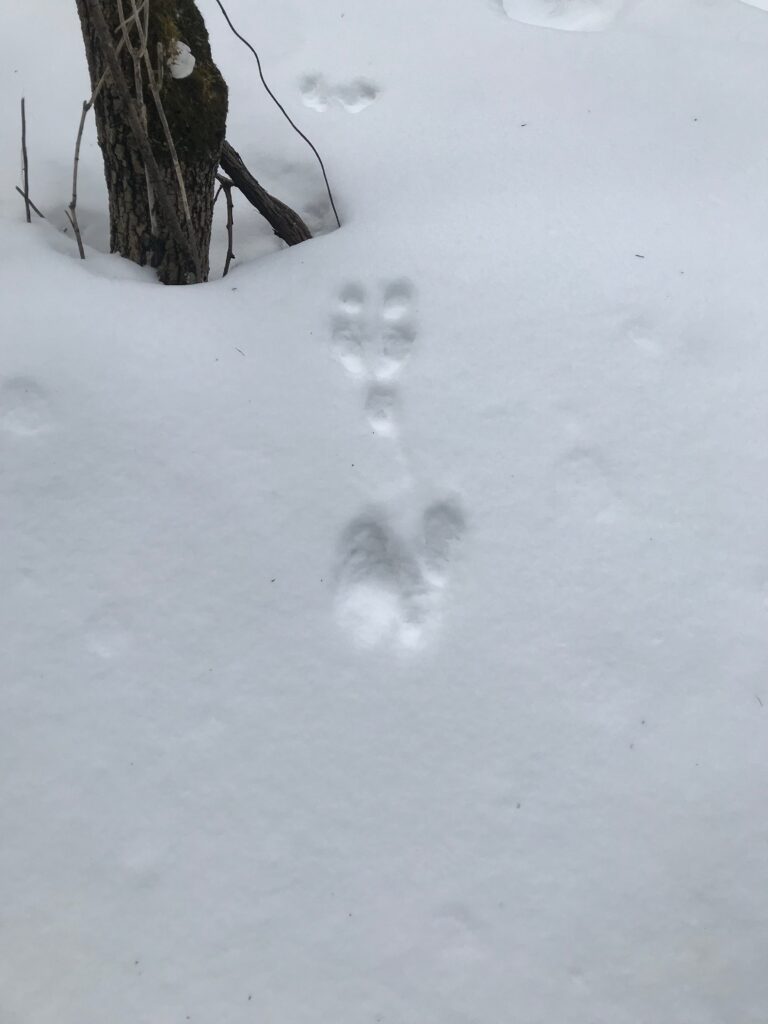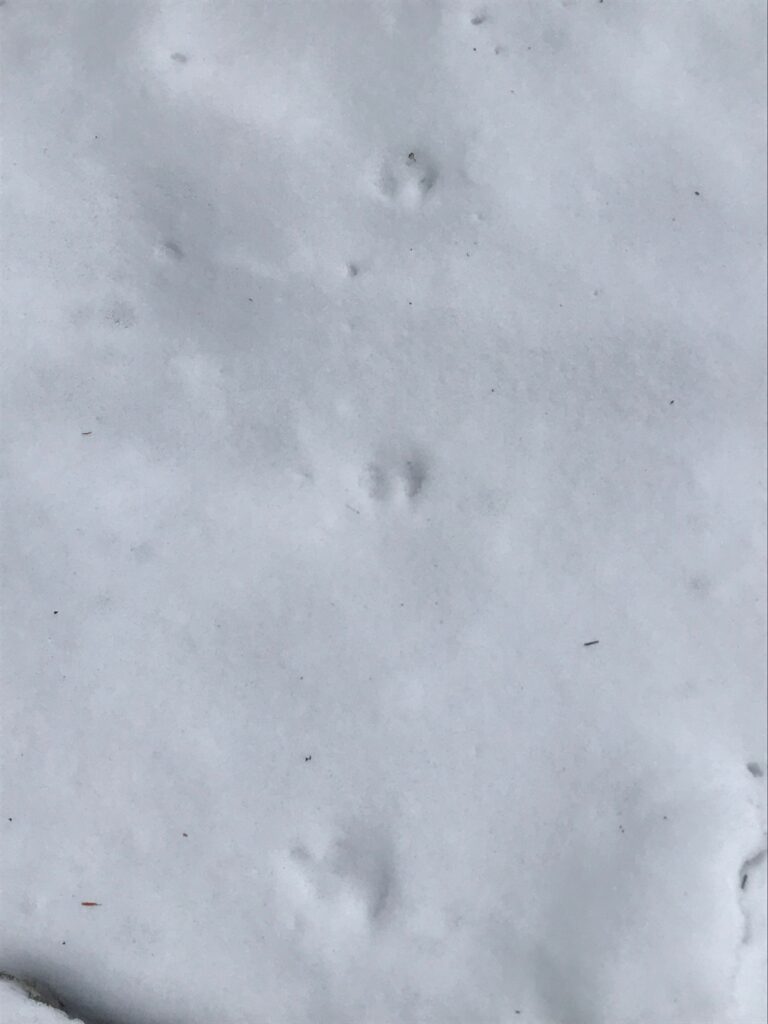Upon visiting my site, I took the time to listen to the barely trickling stream, slightly thawing under the early March sun. I realized how much I missed the gentle sounds of the stream when visiting my site; it added an extra layer of peacefulness that was missing the last time I visited while the stream was still frozen.
The eastern hemlocks have grown new pinecones that are beginning to spread open as spring approaches. I found some beautiful new tracks in the snow, most likely from a rabbit and a mouse or vole. I noticed that the area changed immensely since the first time I visited. The small wildflowers and ferns I encountered are covered under the snow, and the bank of the stream seems to have eroded with the amount of precipitation from the winter. I remember hearing lots of birds during my visits in the fall, but this time I noticed it was silent except for the soft sounds of the stream.



According to the Wetland, Woodland, Wildland text, I would classify Centennial Woods as a northern hardwood forest. Beech, red maple, sugar maple, and birch trees are very common throughout my forest. Classifying my site specifically is more of a challenge. My site is dominated by eastern hemlocks with a few white pines and striped maples, and this mix isn’t listed as its own natural community that’s best expressed in the Champlain Valley. I would say that my phenology spot is on the edge of two communities, one being an eastern hemlock forest and the other being a white pine-transition hardwood forest. The dominant eastern hemlock population leads to my first conclusion, while the abundance of white pines, maples, and beech trees on the other side of the stream create a completely different forest composition. In Wetland, Woodland, Wildland, this type of forest is called a
transition hardwoods limestone forest. I’m unsure if my area is abundant in limestone so this classification could be incorrect.
I’m excited to visit my site as spring rolls into Burlington!!
Citations:
Thompson, E. H., & Sorenson, E. R. (2005). Wetland, woodland, wildland: A guide to the natural communities of Vermont. Montpelier: Vermont Dept. of Fish and Wildlife and the Nature Conservancy.